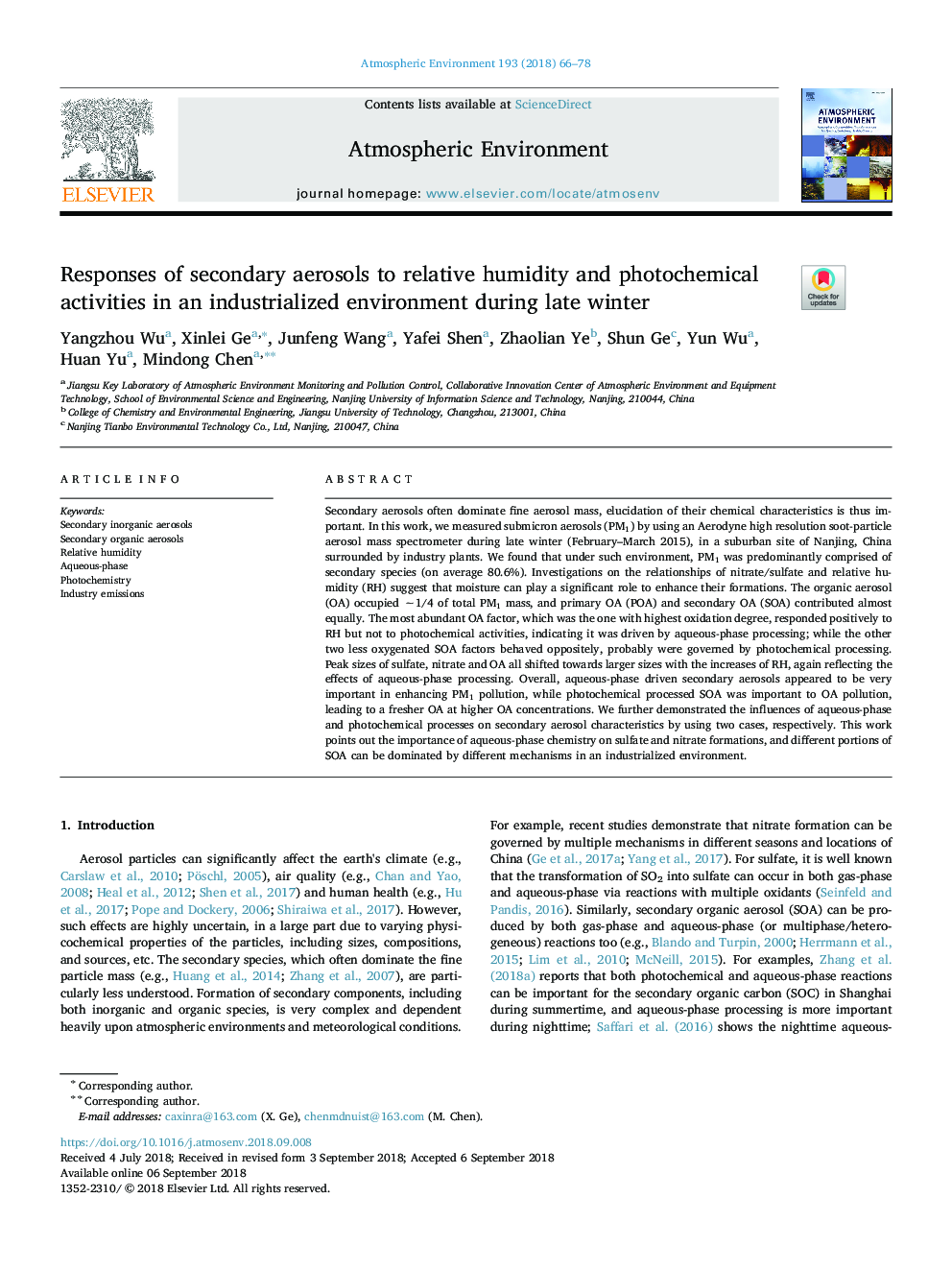| کد مقاله | کد نشریه | سال انتشار | مقاله انگلیسی | نسخه تمام متن |
|---|---|---|---|---|
| 10149601 | 1646755 | 2018 | 13 صفحه PDF | دانلود رایگان |
عنوان انگلیسی مقاله ISI
Responses of secondary aerosols to relative humidity and photochemical activities in an industrialized environment during late winter
ترجمه فارسی عنوان
پاسخ های آئروسل ثانویه به رطوبت نسبی و فعالیت های فتوشیمیایی در یک محیط صنعتی در اواخر زمستان
دانلود مقاله + سفارش ترجمه
دانلود مقاله ISI انگلیسی
رایگان برای ایرانیان
کلمات کلیدی
اسپری های غیر آلی ثانویه، اسپری های آلی متوسط، رطوبت نسبی، فاز آبی، فتوشیمی، انتشارات صنعت،
موضوعات مرتبط
مهندسی و علوم پایه
علوم زمین و سیارات
علم هواشناسی
چکیده انگلیسی
Secondary aerosols often dominate fine aerosol mass, elucidation of their chemical characteristics is thus important. In this work, we measured submicron aerosols (PM1) by using an Aerodyne high resolution soot-particle aerosol mass spectrometer during late winter (February-March 2015), in a suburban site of Nanjing, China surrounded by industry plants. We found that under such environment, PM1 was predominantly comprised of secondary species (on average 80.6%). Investigations on the relationships of nitrate/sulfate and relative humidity (RH) suggest that moisture can play a significant role to enhance their formations. The organic aerosol (OA) occupied â¼1/4 of total PM1 mass, and primary OA (POA) and secondary OA (SOA) contributed almost equally. The most abundant OA factor, which was the one with highest oxidation degree, responded positively to RH but not to photochemical activities, indicating it was driven by aqueous-phase processing; while the other two less oxygenated SOA factors behaved oppositely, probably were governed by photochemical processing. Peak sizes of sulfate, nitrate and OA all shifted towards larger sizes with the increases of RH, again reflecting the effects of aqueous-phase processing. Overall, aqueous-phase driven secondary aerosols appeared to be very important in enhancing PM1 pollution, while photochemical processed SOA was important to OA pollution, leading to a fresher OA at higher OA concentrations. We further demonstrated the influences of aqueous-phase and photochemical processes on secondary aerosol characteristics by using two cases, respectively. This work points out the importance of aqueous-phase chemistry on sulfate and nitrate formations, and different portions of SOA can be dominated by different mechanisms in an industrialized environment.
ناشر
Database: Elsevier - ScienceDirect (ساینس دایرکت)
Journal: Atmospheric Environment - Volume 193, November 2018, Pages 66-78
Journal: Atmospheric Environment - Volume 193, November 2018, Pages 66-78
نویسندگان
Yangzhou Wu, Xinlei Ge, Junfeng Wang, Yafei Shen, Zhaolian Ye, Shun Ge, Yun Wu, Huan Yu, Mindong Chen,
